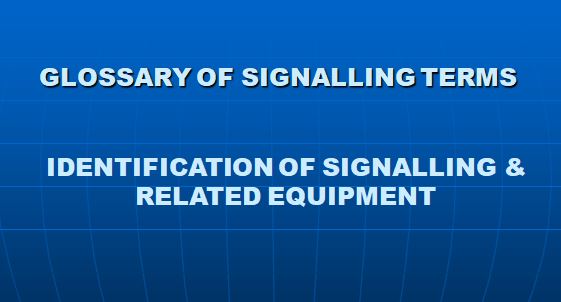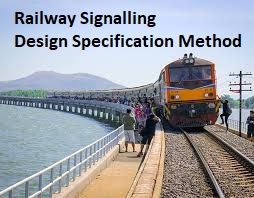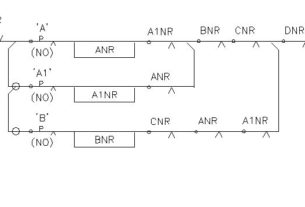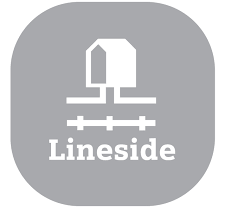Railway Signalling – Glossary of Signalling Terms
This standard defined the meaning of commonly used signalling Glossary of Signalling Terms to ensure that each term is clearly understood and always use to convey the same meaning. The glossary is arranged in alphabetic order.
What is Railway Signalling Glossary of Signalling Terms?
Examples of Glossary of Signalling Terms:
| TERM | DEFINITION |
| ALPHANUMERIC ROUTE INDICATOR | A ROUTE INDICATOR that conveys its information by alphanumeric characters. |
| APPROACH LIGHTING | The lighting of a SIGNAL only on the approach of a train. |
| ATP | Abbreviated term for AUTOMATIC TRAIN PROTECTION. |
| BANNER REPEATING SIGNAL | A SIGNAL provides the driver with preliminary information about whether a SIGNAL is ON or OFF. |
| CD | Abbreviated term for CLOSE DOORS INDICATOR. |
| FLASHING DOUBLE YELLOW (ASPECT) | Displayed by a COLOUR LIGHT SIGNAL, informs the driver to expect the next MAIN SIGNAL at FLASHING SINGLE YELLOW. |
| HEADWAY | The shortest distance or time interval between the Two following trains, so that the second train can run at its normal operating speed without being restricted by the SIGNAL ASPECTS. |
| LAST WHEEL REPLACEMENT | A control applied to a SIGNAL which replaces it to its most restrictive aspect only after the whole the train has passed the signal. |
| LOS | Abbreviated term for LIMIT OF SHUNT INDICATOR. |
| NX | Abbreviated term for ENTRANCE – EXIT SYSTEM. |
| SPAD | SIGNAL passed at DANGER. |
| SUPPRESSION | (AWS) Inhibition of the operation of AWS track equipment for movements to which it does not apply. |
| TORR | Abbreviated term for TRAIN OPERATED ROUTE RELEASE. |
| WARNING (ROUTE CLASS) | A ROUTE from one MAIN SIGNAL to the next main signal where the full OVERLAP is not available or not required |
IDENTIFICATION OF SIGNALLING AND RELATED EQUIPMENT
To define the principles for ensuring that items of signalling and related equipment are clearly and unambiguously identified.
OBJECTIVES
The objective of identifying signalling and related equipment is to ensure that
1. Confusion does not arise in verbal or written communication when geographical location and equipment are the subjects of communication.
2. Events, incidents and operational engineering activities can be accurately and concisely described.
RESPONSIBILITIES
Network Rail, as infrastructure controller, shall ensure that a procedure is in place that ensures that allocated identities are documented.
PLACE NAMES
Geographic Identity Each of the following features shall have a name.
1. Control Centre, Signal Box or Gate Box
2. Ground Frame or Ground Switch Panel.
3. Tunnel, Viaduct, Swing bridge etc.
LINES & SIDINGS
Each line and siding within or adjoining a signalled area shall have an identity.
IDENTIFICATION
Each signal box or locality shall be assigned a code that is unique as far as reasonably practicable.
BLOCK SYSTEM
Manually controlled block system shall be named by appropriate reference to the line and/or the ends of the block section (e.g. AA-BB DM Block).
TRAIN DETECTION
Each track section shall have an identity. The identity shall generally be unique to the signal box or locality as applicable. Train detection equipment associated with the track section shall be identified by the track section identity and where necessary suitable suffixes.
LINESIDE SIGNALS
Each signal shall have an identity that is unique to the signal box or locality as applicable. Signals worked by levers shall be identified by the lever number. The following signal suffixes shall be used and the meanings are exclusive.
1. BR for a banner repeating signal, the number being as for the repeated signal.
2. CA for a co-acting signal, the number being as for the primary signal.
3. R only for a distant signal worked from the same lever as a stop signal, the number being the lever number.
SIGNAL IDENTIFICATION PLATES
Identification plates shall be provided as the following signals:
1. Colour light signals
2. Semaphore running signals.
3. Position light shunt and limit of shunt signals.
4. Banner repeater signals.
Identification plates are not generally required at other types of signal or board but the provision of adequate identification plates or label shall be considered.
OPERABLE LINESIDE INDICATORS
Each operable indicator not forming part of a signal shall have an individual identity. Loading/unloading indicators shall be identified in the same manner as signals. Other types of operable indicator shall be identified by association with the relevant function namely:
1. RA indicator(s) with signal, or with a platform where there is no relevant signal.
2. OFF indicator(s) with signal
3. SPAD indicator with signal(s)
4 Points indicators with points.
POINTS
Each pointed end (as defined and including catch points and hand points) worked or detected by a signalling function, shall have an identity that is unique to the signal box or locality as applicable. Points worked by levers shall be identified by the lever number.
LOCKOUT SYSTEMS
Each lockout section shall have a numeric identity unique to the signal box.
STAFF WARNING SYSTEMS
Each staff warning system shall have a place name and associated locality code.
TRACK – BASED DATA TRANSMISSION EQUIPMENT
All balises, loops and other track equipment used for data transmission between track and trains shall be uniquely identified.
TRAIN – BASED SIGNALLING AND DATA TRANSMISSION EQUIPMENT
Where it is necessary for the operation of the signalling system for train-mounted equipment to report the identity of the train or vehicle on which it is installed, the infrastructure controller shall consult with the train operators to determine the system of identification to be used and shall establish and maintain a system for the allocation and recording these identities.



